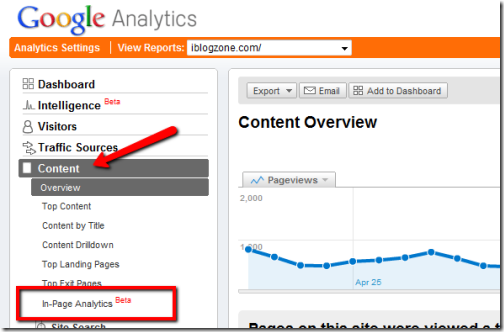


See when one page element has multiple destinations (e.g. Which Traffic Source dimensions does Google Analytics automatically capture for each user who comes to your site A.It may sound a bit scary, but if you know the basics, it’s quite doable and will make your Google Analytics life a whole lot easier. Lunametrics made this fun regex guide that shows you how you can use regex in Google Analytics. See separate information for multiple links on a page that all have the same destination. Or you can use regex regex stands for regular expression.Therefore, Google has worked to improve this feature in a way that three important aspects are now possible: The most common complaint about In-Page Analytics is that if a page has two or more links to the same destination page, we show the same statistics for both links, since there was no telling which link the user actually clicked. In addition, JavaScript buttons and actions could not be tracked using In-App Analytics up till now.īefore now, In-Page Analytics was limited to showing clickthrough information by URL and not by the actual link on the page, and was limited to showing information only on links, and not on other elements like buttons. However, as we can see in the screenshot below, two separate links that send visitors to the same page are aggregated in this report, meaning that we wouldn’t be able to measure the success of two different links in driving visitors to another page.
INPAGE ANALYTICS HOW TO
non-mobile clicks (learn more about advanced segments and how to create them). Organic searches is about the natural search which are unpaid, paid searches are for your Google Ads account and referral traffic is when someone lands on your website through some other search.
INPAGE ANALYTICS INSTALL
Again, In-Page Analytics is not here to replace. Google Analytics account is used to track the user behavior when you install the codes on your website your get different traffics. Here’s an example of In-Page Analytics in action on our homepage. As we can see below, by using Advanced segments we would see for each link the percentage of mobile vs. In-Page Analytics is a Google Chrome extension that lets you see some parts of your Google Analytics data right there on your website, no need to go to Google Analytics. A great case would be to check how often mobile users click on specific links as opposed to non-mobile users. For example, they can be used to understand if specific links on a page are used or not and by which segments of visitors. The reports are a great way to analyze patterns of behavior, and can provide important insights to web designers and UX professionals. The In-Page Analytics reports provide, in a page basis, the percentage of clicks from page to page in a website. The In-Page Analytics tool shows data for what visitors do, how they behave, what they see, what they click and. Yesterday the Google Analytics team announced an important improvement to their In-Page Analytics report: enhanced link attribution. Google In-Page Analytics is a feature of Google Analytics that allows you to assess how your website visitors interact with each of your web pages.


 0 kommentar(er)
0 kommentar(er)
